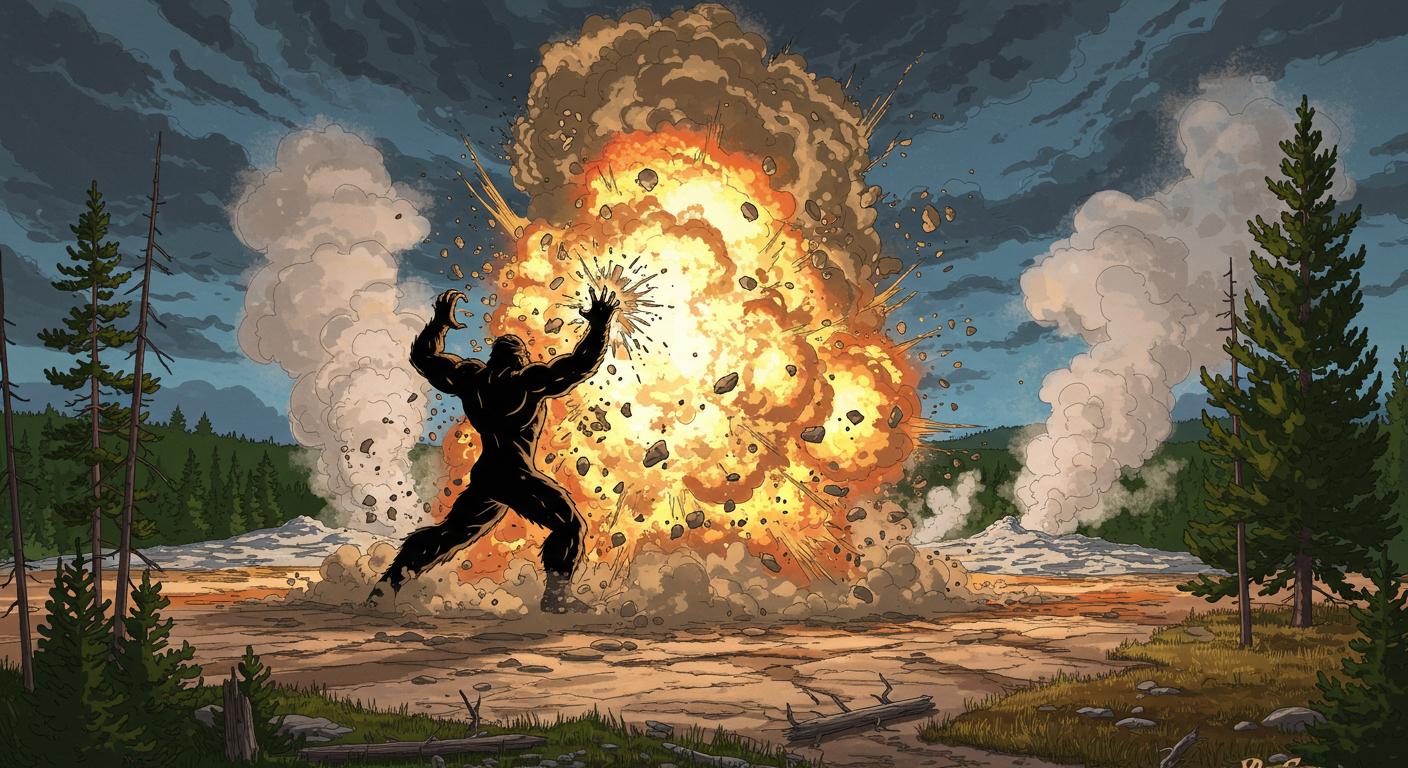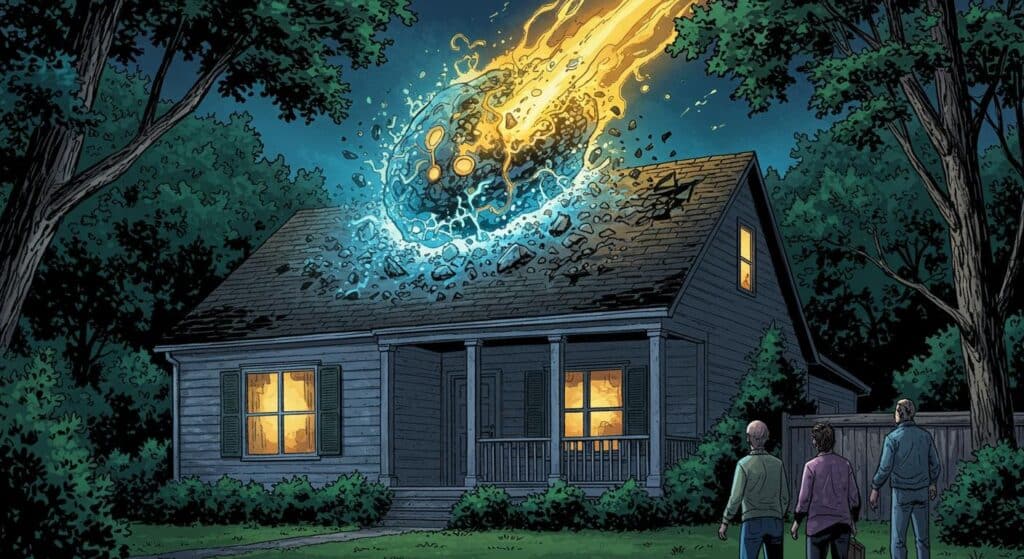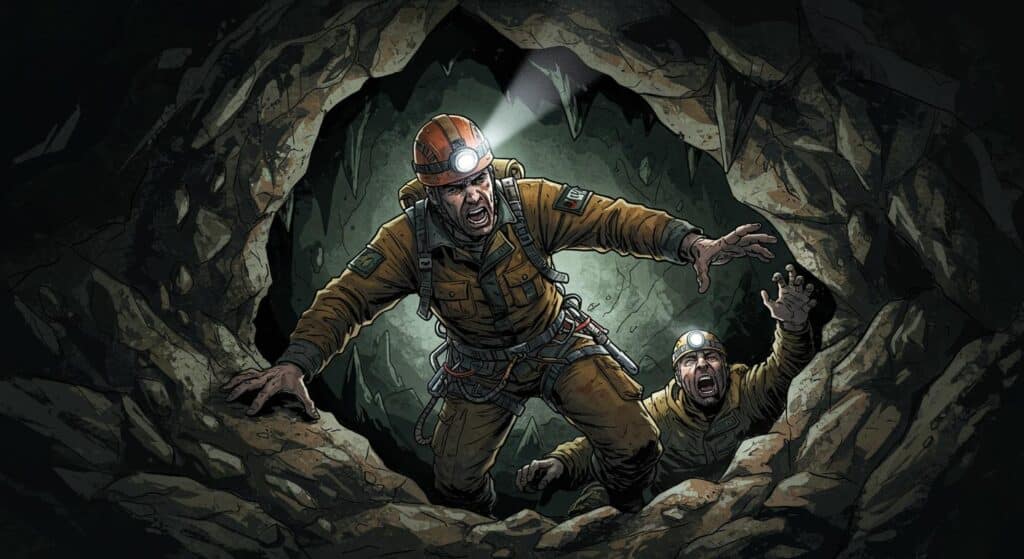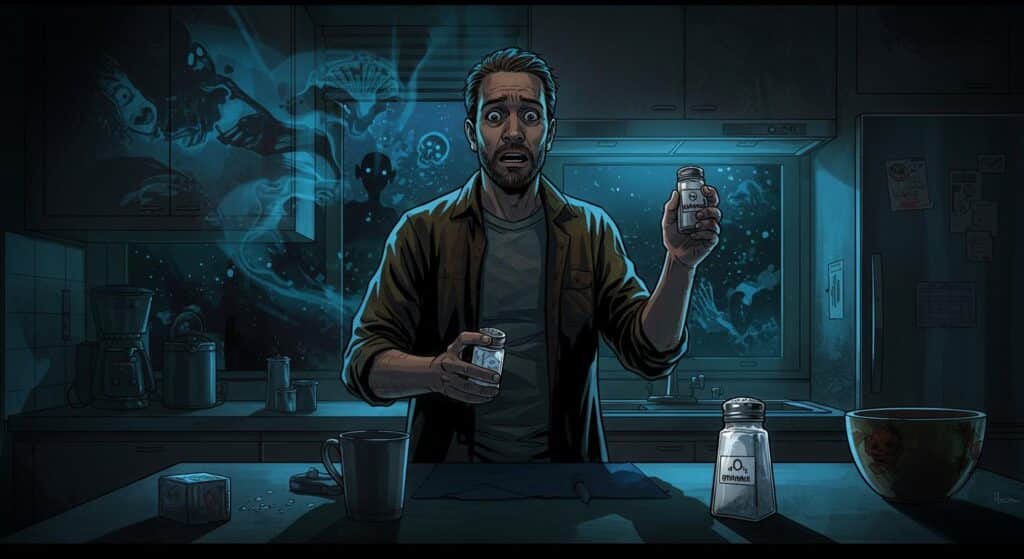There are few things more quintessentially “Yellowstone” than the ground deciding to put on a show. If you tuned in hoping for footage of a shambling bipedal legend, you might be mildly disappointed to learn that the latest “Sasquatch Event” making headlines refers not to cryptid encounters, but to a particularly unpredictable hydrothermal eruption. As chronicled in Discover Magazine, the Yellowstone Volcano Observatory (YSO) uses the term “Sasquatch Event” for eruptions in thermal pools so rare and elusive that actually catching one on camera is, well, Bigfoot-worthy.
Blurry Photos Not Required—Just Watch the Mud Fly
Following a July 2024 incident in which mud, rocks, and water were blasted some 400 feet into the sky at Biscuit Basin, researchers at YSO decided it was time to keep a closer eye on the area. As explained by Monica Cull in Discover Magazine, Black Diamond Pool—already infamous for its tumultuous past—became the focus of a surveillance effort complete with a publicly accessible webcam snapping images every fifteen minutes.
The hunt for these elusive outbursts shifted from fieldwork to digital stakeout. Patience paid off in May 2025, when a routine scan of the webcam images by a citizen scientist flagged fresh sediment, displaced rocks, and notably damp ground around the pool that appeared between the 8:30 p.m. and 8:45 p.m. timelapse. Upon deeper review of the footage, YSO researchers pinpointed a four-second eruption at 8:39 p.m., sending a jet of steam, water, and sediment nearly 30 feet high. The fact that a webcam-toting Bigfoot hunter could join the scientific process feels like a subtle nod to the legend’s enduring mystery—with slightly less fur and a lot more geothermal drama.
A Pool With a Temper and a History to Match
According to details outlined in the Discover article, Black Diamond Pool’s penchant for eruptions isn’t new. The pool may have first formed between 1902 and 1912 after a major hydrothermal explosion. Following the dramatic 2024 event, seismic sensors and ground monitoring continued to pick up signs of unrest—even as equipment was knocked over, buried in mud, or swept into the river by subsequent blasts. Despite the chaos, researchers confirmed at least eight additional eruptions using whatever intact gear remained, although some event size and duration data were lost—a sort of scientific whodunit reminiscent of chasing cryptids through the fog.
The unpredictable and sporadic nature of these outbursts led the YSO team to adopt the “Sasquatch Event” moniker, a fitting name given both the rarity of direct observation and the physical evidence left behind. There’s a certain irony in a phenomenon known for damaging equipment and frustrating documentation being named for a creature famous for blurry photos and unsubstantiated footprints.
It’s Not Magma—It’s Just Steam (And a Lot of It)
Delving into the science, YSO researchers clarified in a statement cited by Discover Magazine that these types of explosions aren’t caused by direct magma interaction or magmatic gases reaching groundwater near the surface. Instead, the culprit is good old-fashioned steam: when water trapped underground in a sealed space boils, the resulting pressure builds up until it shatters the surrounding rock, leading to a sudden release—sometimes flinging rocks and sediment high enough to command attention, even from casual webcam observers.
During the 8:39 p.m. eruption on May 21, 2025, seismic equipment captured a rapid temperature increase from about 125.2°F to 146.5°F, before quickly dropping back to near-normal levels—125.4°F—within the same four-minute window. As noted in the article, the pool itself returned to its usual simmer an hour later. This rapid spike and recovery underscore just how fast these geothermal fits come and go, almost like nature’s own flashbulb popping off.
The July 2024 eruption—already notable for its destructive reach—likely altered the internal “plumbing” of Black Diamond Pool, the YSO research team added, which may explain why eruptions seem to have become more frequent since. It’s no surprise, then, that the area remains cordoned off for visitor safety; even professional equipment struggles to survive these tantrums.
Webcam Science and Yellowstone’s Curious Club
One understated gem in Cull’s reporting is the contribution from citizen scientists: simply by monitoring the livestreamed images and reporting anomalies, remote observers have helped document at least three more eruptions since May—one in June and two in July. The ongoing partnership between seismic sensors and pixel-pushing volunteers is yielding a trove of fresh data, even if some seismic gear continues to live precariously close to Yellowstone’s temperamental mud.
Looking at it another way, the tale of the “Sasquatch Event” feels uniquely Yellowstonean: a land full of sudden drama and unpredictable beauty, captured in just a few muddy frames between the trees. The park’s most unruly monsters aren’t exactly lurking under cover of night—they’re right there, occasionally belching a column of superheated sludge for all to see (at a distance, hopefully).
As the cameras keep rolling and the ground continues its occasional outbursts, you might wonder if the next legendary Yellowstone photo-op will feature shaggy footprints, or simply a muddy blast that sends scientists, citizen observers, and the odd Sasquatch enthusiast scrambling to check the replay. For now, Yellowstone’s “gassy” giants remain thoroughly unsuperstitious—just as wild, and a bit more photogenic, than their cryptid namesake.







